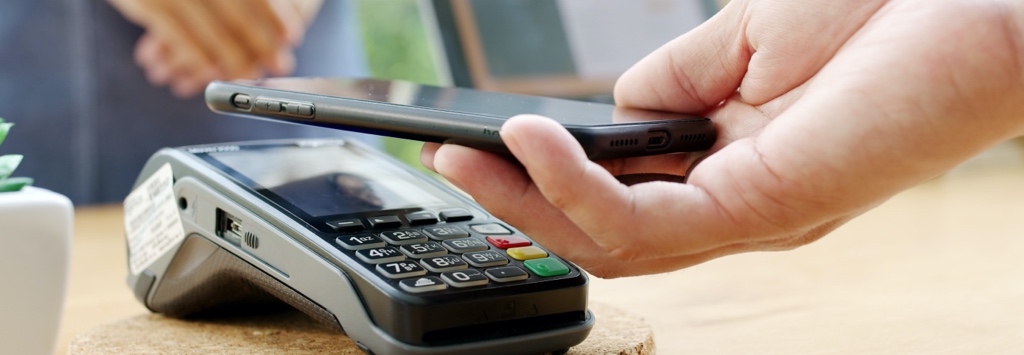GENERAL
Top 2022 Trends for Retailers to Keep Customers Smiling (and Spending)
GENERAL
Top 2022 Trends for Retailers to Keep Customers Smiling (and Spending)


Ah, November, smack in the middle of the holiday season. That magical time of year when visions of record-breaking sales revenue (and the occasional sugar plum) start dancing in the heads of retailers the world over.

The Biggest eCommerce Trend for 2022? Keep Your Customers Happy.
The following trends to look out for in 2022 have the potential to benefit retailers in big, tangible ways by keeping your customers happy, and spending.
1. Make Your Customers Love You
Let’s face it, if your customers aren’t loyal to you, you’ll struggle to be successful, and with products having more parity and less differentiation than ever before, brand loyalty is no longer a safe assumption. It’s also worth remembering that it will always cost you more money to acquire a new customer than it will to simply retain one of your existing, satisfied ones.
You need to go out of your way to create and nurture relationships with your customers like never before, especially your best customers, and you need to listen very closely to what your best customers have to say. You can’t just focus exclusively on transactions. You have to show your customers that you also care about them. In return, your customers will show their allegiance to your company and, of greatest importance, will share their affinity for your brand with family and friends. In short, you need to be laser-focused on never—under any circumstances—letting your customers down, knowing that the moment you do, your customers will go looking for other places to spend their money.
According to Bain & Co., a 5% increase in customer retention correlates with at least a 25% increase in profit.

2. Stick to Your Values
Today, your customers are buying more than just your products and services—they’re buying your values. They’re buying your company’s beliefs, the charitable causes you support, your political affiliations, the kind of corporate culture you’ve created, etc. Many customers, particularly Millenials and Gen Z are so hyper-focused on how companies treat their employees that they will decide whether or not to spend their money with your company based on the happiness of your employees.
Think of it this way. Your company’s “purpose” is about more than just how your company reacts to issues of the day. It’s about having a real, bonafide commitment to important principles that consumers care about, like mental and physical wellbeing and environmental sustainability. These principles have to inform every one of your business decisions, or else, risk the wrath of your customers. We’re at the point where buyers are no longer just buyers, they’re stakeholders investing their time, attention, and money in your company, and they want to feel a sense that you believe what they believe. If they start to feel that you’re being anything less than transparent and inauthentic, odds are they will leave you for a company that better aligns with their beliefs.
According to a 2020 Consumer Culture Report, 71% of consumers prefer buying from brands that align with their values.

3. Make Everything Personal
Consumers know that they are constantly being tracked by technology, which, for many, isn’t necessarily a deal-breaker. However, they do expect something in return for their data, and that something is a better customer experience, tailored especially to their needs and preferences. The key to selling in 2022 will depend on the data you collect from customers and how you utilize that data to make every touchpoint more relevant to them.
Companies are investing in learning all there is to know about their customers by setting up testing programs and data aggregation tools that aid the development of business insights. In 2022, retailers will demand access to more holistic data insights to help them make business decisions. Retailers will be looking for tools that allow for better cross-channel attribution to inform the creation of more accurate customer segments, personas, and journeys. Customers will be looking for businesses that use this data to offer more personalized experiences.
4. Sell, but Sell Softly
Just because someone is looking to buy doesn’t necessarily mean that they want to be sold to. With interactive quizzes to help you find the perfect shade of lipstick, and QR codes to help learn which wine pairs best with grilled salmon, shoppers are more than capable of “selling” to themselves. Technology has created less of a need for salespeople or, at the very least, less of a need for salespeople in the early stages of the buying process.
Take Sephora, for example. The beauty retailer recently instituted a color-code system for their in-store shopping baskets. Red baskets indicate that the customer is looking for assistance while they shop. Black baskets are for customers looking to shop solo. While the coded baskets are currently a Europe-only program, it’s a great example of a brand digging deep to better understand their customers’ preferences, and creating a simple, yet effective way to help address those preferences … and you should too.

5. Expedite Expedited Shipping
When exactly did shipping become such an important factor in a consumer’s purchase decision? Ask Jeff Bezos. When Amazon first announced its Prime membership in 2005 with the promise of free, unlimited two-day shipping, it differentiated itself from the competition in the eCommerce fulfillment space. So much so, that customers’ expectations have radically changed around the supply chain. In fact, free shipping is consistently cited as one of the most popular incentives by online shoppers. Two-to-three-day free delivery is not just expected by consumers—it’s assumed. What happens if your company fails to offer free, two-to-three day shipping? Use your imagination.
Try to find a way to offer free shipping, even if that means increasing the price of a product to offset the shipping cost, encouraging shoppers to add items to qualify for free shipping, or asking them to join a paid membership group. Also, be transparent with your return and exchange policies. Make sure that your return options are convenient for the customer, and that your inventory forecasting is spot-on; nobody wants to learn that the product they ordered three days ago is no longer available.
According to Forbes, lack of preferred shipping options is the number one reason consumers abandon carts.

6. Make BOPIS Permanent
While it was definitely accelerated because of the pandemic, consumers were already expecting multiple options in terms of receiving their products. In addition to home delivery and curbside pick-up, buying online and picking up in-store, or, BOPIS, has become incredibly popular. Why? The primary reason is that they get the item they purchased online faster (as opposed to waiting for them to arrive via shipping) and they can return in-store more easily.
BOPIS responds to consumers’ desire for faster, more convenient transactions that match their mobile, digital-first lifestyle. BOPIS can become even more powerful (and profitable) when retailers integrate it into a bigger effort to supply more deeply personalized interactions with customers across all channels. For many different types of products, such online customization could combine with in-store pickup for a compelling double dose of personalization and convenience.
According to Business Insider, 70% of consumers who shop online in the U.S. are using the click and collect model at any given time.
7. Offer Alternate Payment Options
When was the last time you pulled out a wad of cash to pay for dinner or cover your rent? It’s probably been quite a while. The shift to a cashless society has been a long time coming, but there are other options that are leading to an increase in alternative payment methods (APMs), which is a payment that does not involve cash or a credit card. Bank transfers, direct debits, e-wallets, mobile transfers, prepaid cards, store cards, and now even cryptocurrencies are all samples of APMs. They allow consumers to make quick and easy payments and are especially useful for eCommerce transactions.
Alternate payment methods tap into the consumer’s desire for choice and convenience. As a retailer, you should be prepared to offer an array of payment options at your online checkout, and at the top of that list should be an option to buy now, pay later, which is currently one of the most popular APMs in the marketplace. As a business, you need to be able to offer the latest in payment technology. To forego that offer could result in customers opting to do business with another retailer.
According to technology solutions provider FIS, digital wallets will make up more than 50% of eCommerce transactions by 2024.

8. Commit to Augmented Reality
The introduction of social distancing during the pandemic certainly did its part in accelerating the adoption of digital tools that reduce the need for physical interaction. Once used exclusively for entertainment and video games, augmented reality (AR) has increasingly been employed by a wide range of industries—from education and health care to retail and real estate.
One common use is the “try with AR” function where users preview how certain products would look and fit in a determined location by using a smartphone camera and projecting a virtual model of the product over the captured image in real-time. Such technology is already being used by retailers including Warby Parker, Amazon, Target, and IKEA, for example. Ideally, every brand wants its customers to have a personalized experience every time they buy a product or service from them. When it comes to augmented reality, the possibilities for personalization are limitless. These days, customers are looking for convenience and differentiation, which is where augmented reality comes in. After all, you can’t afford for your business to blend into the background. You want it to be at the forefront of the market, and adopting advanced technology, like augmented reality would certainly help put it there.
According to Threekit.com, 83.1 million consumers in the U.S. used Augmented Reality monthly in 2020.

9. Ascribe to the Power of Subscriptions
During the pandemic, the popularity of subscription services underwent massive growth, as Americans in lockdown mode flocked to digital entertainment and signed up for regular home delivery of boxes of items—everything from clothes and food, to wine and pet toys. However, what really set the past year apart was the increase in subscriptions in the hard-hit services sector. Owners of restaurants, hotels, home-repair companies, and others upended their traditional business models to try subscriptions and, for the most part, found more interest—and revenue—than they thought they would.
Subscriptions bring in upfront revenue, strengthen relationships with customers, and give companies a lot of insights into what sells. Even hotels and car washes have begun offering an enhanced and more exclusive experience—for a monthly or annual fee. The fact is, we are shifting from a transactional economy to one based more on relationships. A subscription is a recurring touchpoint with the customer; a constant reminder that people have a relationship with the brand.

10. Have a Say in Voice Technologies
There’s no doubt that using voice commands is easy and convenient. Voice technologies also offer a level of personalization that exceeds anything that was possible before. With smart voice technologies, you can have an actual “voice” communicate directly with your customers, and answer their questions.
People now expect more products to be compatible with their favorite voice assistants. You probably noticed there are a whole lot more products that are “Alexa-compatible” on Amazon—from refrigerators to robot vacuums. This integration allows people to control their TVs, home security systems, and even the lights with voice commands. The effect that this will have on your business is that you’ll need to start incorporating this in your products as well. If you sell a digital or electronic product, voice commands are something that customers will expect by default. The sooner you start adopting this technology, the more future-proof your business will be.
According to Google, 20% of all
searches are through voice.

11. Pop up Stores Will Pop up Even More
Pop-up stores are certainly not a new idea. They’ve pretty much been around for the past decade, or so, especially during festivals, the opening of restaurants and small eateries, specialty boutiques, and sales events like fashion trunk shows. These days, they’ve become a way for retailers to experiment with new types of products and, in the process, tell their brand story in a highly experiential, memorable way.
Traditionally, the pop-up store phenomenon has been the domain of digitally native brands looking to dip their toes in the physical retail world. Beyond digitally native direct-to-consumer startups, we are now starting to see pop-ups become a staple for all types of retailers, including such mass-market brands as Amazon, Calvin Klein, and Macy’s. Pop-ups generate excitement and a sense of urgency, but more importantly, retailers don’t have to sign long leases or purchase expensive corners in shopping malls to promote and sell their products. They are especially a wise investment for brand new startups who want to test the water without having to pay exorbitant rents for a full-time store.
According to Storefront, 80% of retailers who had done at least one pop-up indicated the activation was a success.

12. Lose Your eCommerce Head
Many traditional eCommerce sites use a single, monolithic architecture, where the back end and front end are linked, and you can’t optimize one without the other. While these technologies are relatively powerful and give the technical teams control over your platform, the downside of these systems includes significant development costs and long lead times for marketing and business users. In addition, traditional systems are ideally suited for displaying website content. As buyers shift toward newer tech like mobile apps, digital assistants, wearables like smartwatches, and any other device with an internet connection that’s capable of presenting content, businesses need to rapidly shift their technology to match these new purchasing pathways. This is where the concept of headless eCommerce comes into play.
Headless eCommerce is a separation of the front end and back end of an eCommerce application. This architecture offers businesses freedom of expression to build whatever and whenever they want—in other words—flexibility. The kind of flexibility that allows for ease of optimization or upgrading, as well as staying up to date with the most recent technologies. Ultimately, though, the greatest benefit of choosing a headless eCommerce system, such as RevCommerce, is that you’ll then have the ability to give your customers the best user experience possible which, as we all know, is the key to continued success in the eCommerce marketplace.
According to HubSpot, in 2020, 88% of consumers decided to abandon their orders.
Ring in the New Year With Your Cash Registers
New Year’s Eve is a typically boisterous affair, filled with cheering, popping of corks, and noisemakers. For retailers, though, the sound they’re most anxious to hear as the old year gives way to the new is the sound of their cash registers ringing. Leverage the above trends and you’ll have a strong head start to prioritize your budget and utilize the trends consumers will be most interested in. So, be hopeful about the new year and get to work. As for New Year’s resolutions, what can we say? You’re on your own.
Want even more educational content?
Subscribe below to get timely content delivered to your inbox,
or fill out the form below to speak to a Peakster about your next project.

DIGITAL MARKETING
Top 10 Photos of Developers Staring At Screens

DIGITAL STRATEGY
5 Ways Retailers Can Make Influencer Marketing More Influential

ECOMMERCE

